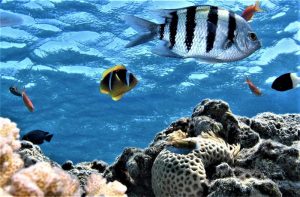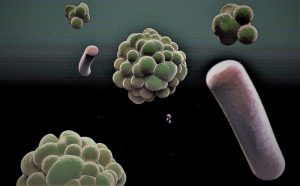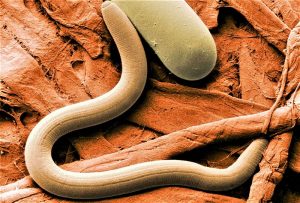Marine ecosystem
Oceans cover two-thirds of Earth's surface. Within this oceanic habitat, live a wide variety of organisms that have evolved in response to various characteristics that are found around them. Marine organisms are not found uniformly in the oceans. The different characteristics of its environment have created different habitats that influence the types of organisms that live in them. Light, depth, proximity to land and topographic complexity affect all marine habitats. Within these depths we find the marine ecosystem.
What is a marine ecosystem?
The marine ecosystem is part of the aquatic ecosystems and can be defined as the interaction of plants, animals and the environment found in the ocean, being this type of ecosystem the largest with 70% of seawater.
Marine ecosystem characteristics
Some important characteristics of the marine ecosystem are:
- They make up 70% of the earth’s surface.
- They dissolve the salts in their own waters.
- Supplies food for humans and generates socioeconomic benefits.
- They fall into the category of aquatic ecosystems.
- Includes seas, oceans and marshes.
- It has two types of regions: Photic, which have light; and Aphotic, which have no light.
- They have great biological diversity.
- Marine currents are in charge of mobilizing nutrients for the development of the beings that inhabit the sea.
- The water is dense.
Biotic factors
Biotic factors are divided into the following parts:
- Producers are for example, phytoplankton, diatoms, dinoflagellates, large marine algae, angiosperms and mangrove vegetation.
- Consumers are subdivided into:
- Primary consumers: are all those animals that feed on producers, such as crustaceans and fish.
- Secondary consumers: carnivorous fish.
- Tertiary consumers: carnivorous animals, but larger than secondary ones.
- Decomposers: are all those microorganisms such as bacteria and fungi.
Abiotic factors
They include the following aspects:
- Ocean temperature
- Light
- Water salinity
- Marine pressure
Marine ecosystem fauna
The fauna is made up of all the animals and living beings that exist in the ocean, regardless of their size. From the smallest like protozoa to the largest vertebrates like whales. They include a great variety of species, from mammals such as dolphins, manatees, otters to birds such as gulls and pelicans, we can even find within the fauna, mollusks, starfish and crustaceans. Turtles, although reptiles, are also part of the marine fauna.
Marine ecosystem flora
There is a great variety of plants in the marine flora, mainly seaweeds. Oceans are full of them and each contains a wide range of different life forms, some of which are so small that they can only be seen through a microscope. They have a varied life form, some of them float and others live fixed on the bottom of the sea or rocks, some may even fix some animals. They vary according to the world regions in which they find themselves and depend on water temperatures in which they live.
Marine ecosystem climate
In marine ecosystems the climate is a severe type of climate, due to the different ocean currents that are constantly moving in the sea. These ocean currents are responsible for creating massive hurricanes and typhoons. Another determining role of the climate of the marine biome is the wind, since it is the cause of the formation of big waves.
Temperature
The temperature found in marine ecosystem is very varied. Because it is the largest biome in the world, the climate varies from -40 degrees Fahrenheit to more than 100 degrees Fahrenheit. The average temperature is 39 degrees Fahrenheit, but it is warmer near the Equator where direct sunlight can penetrate the water and heat it. The lowest temperature water is located at the north and south poles, where the water is close to freezing point. Moreover, the deeper the ocean, the cooler the water will be because sunlight does not pass through it directly.
Importance
The oceans are one of the most important sources of oxygen for our planet and are essential for carbon dioxide capture and storage. The species of animals that live in the ocean provide us with important ecosystem services, such as food, medicines and livelihoods. Also, the seas, and therefore ecosystems, support tourism and recreation around the world. Unfortunately, marine resources have been over-exploited by humans, threatening marine biodiversity. The consequences of overfishing and habitat destruction are evident in many parts of the world and can cause significant irreversible damage to ecosystems.
Examples
- Reefs
- Shallow waters close to the coastlines
- Coastal areas
- Rocky shores
- Estuaries
- Coastal lagoons
- Mangroves
How to cite this article?
Briceño V., Gabriela. (2019). Marine ecosystem. Recovered on 4 January, 2025, de Euston96: https://www.euston96.com/en/marine-ecosystem/










